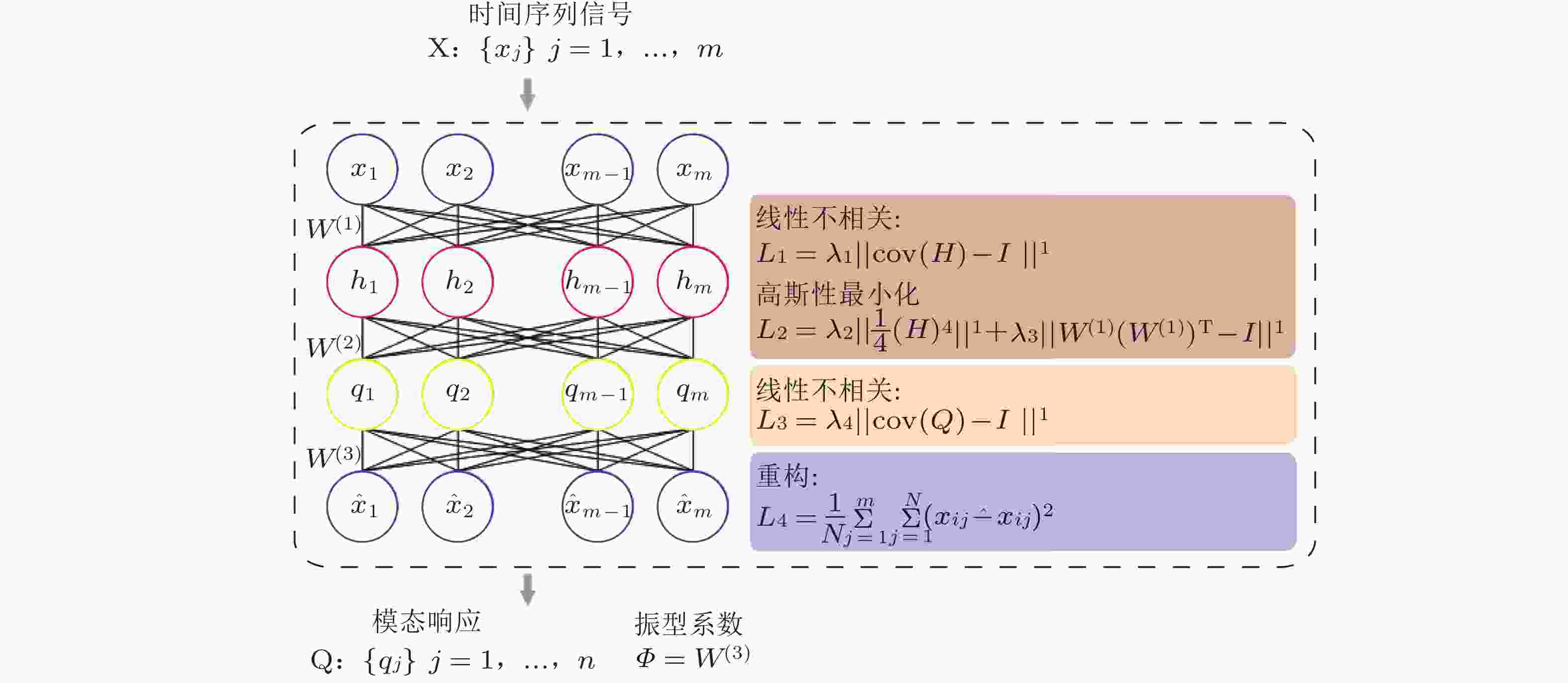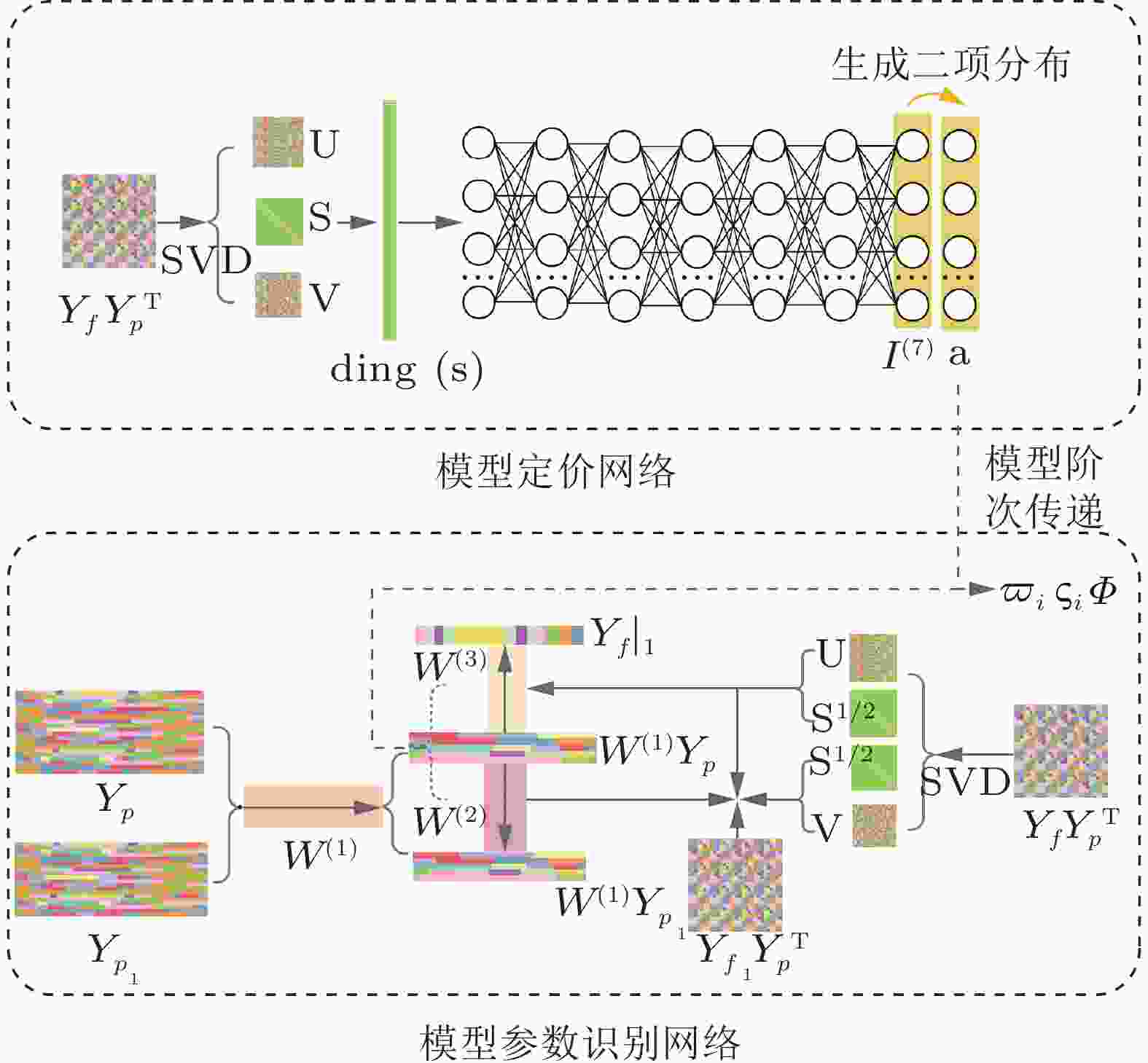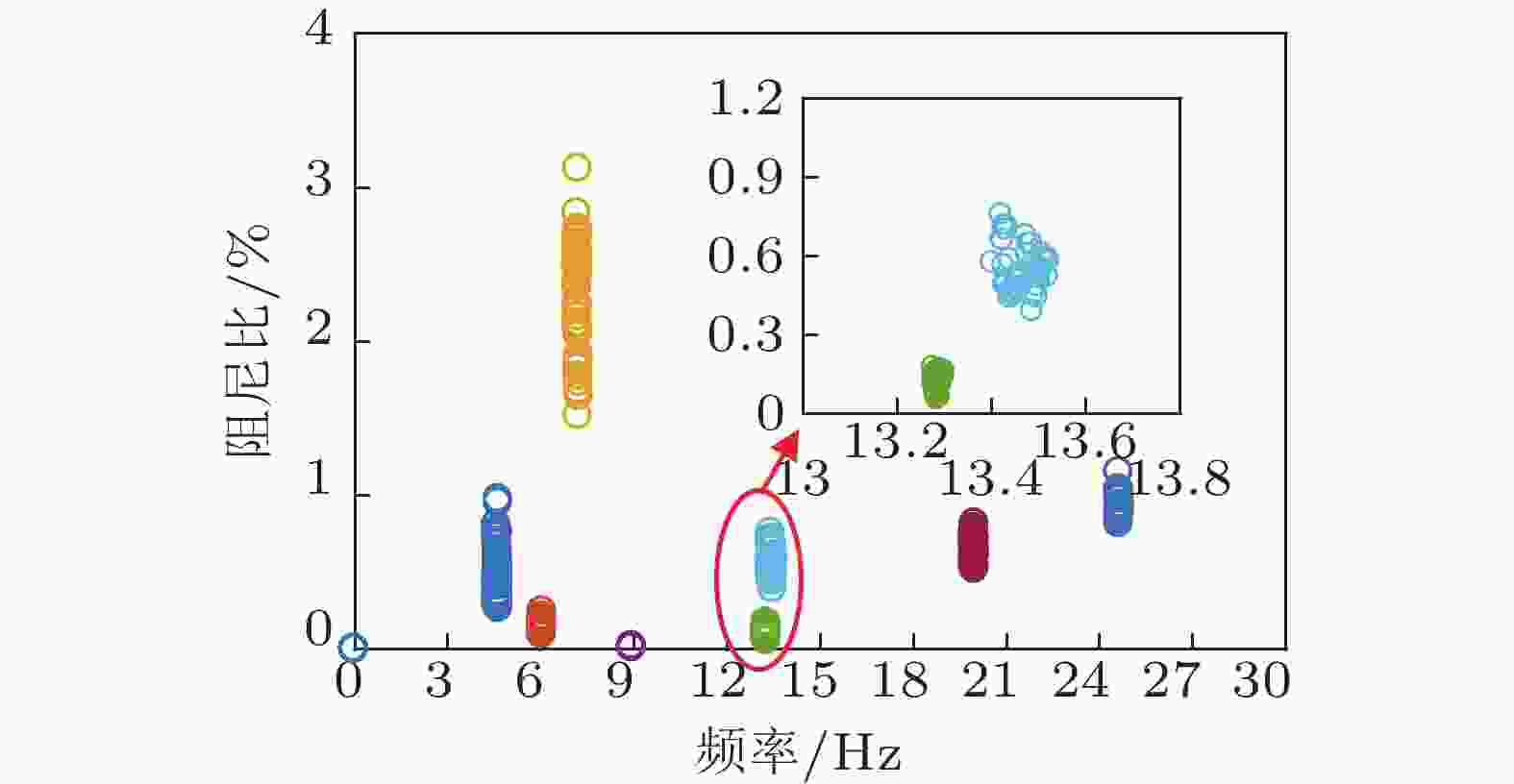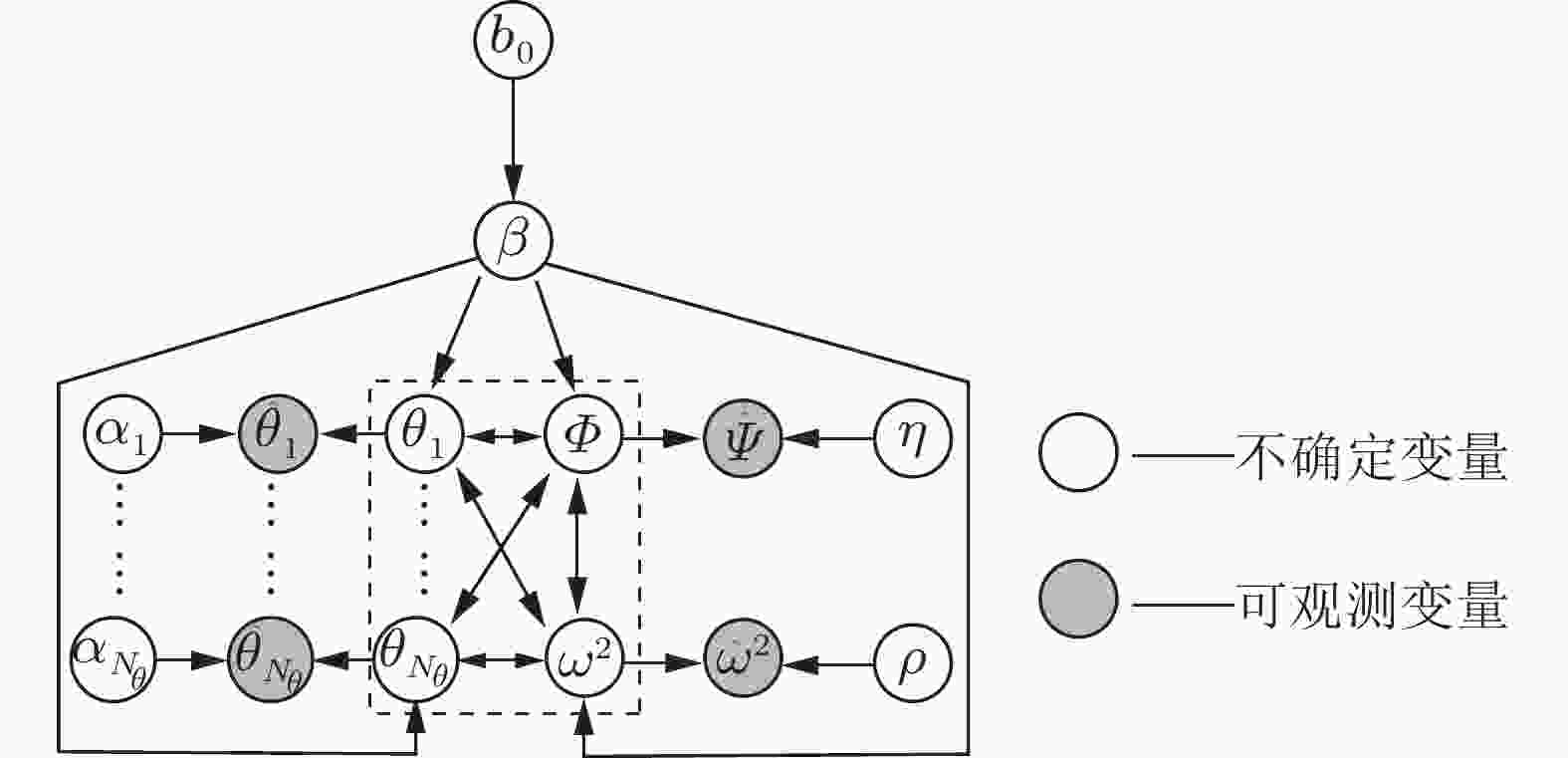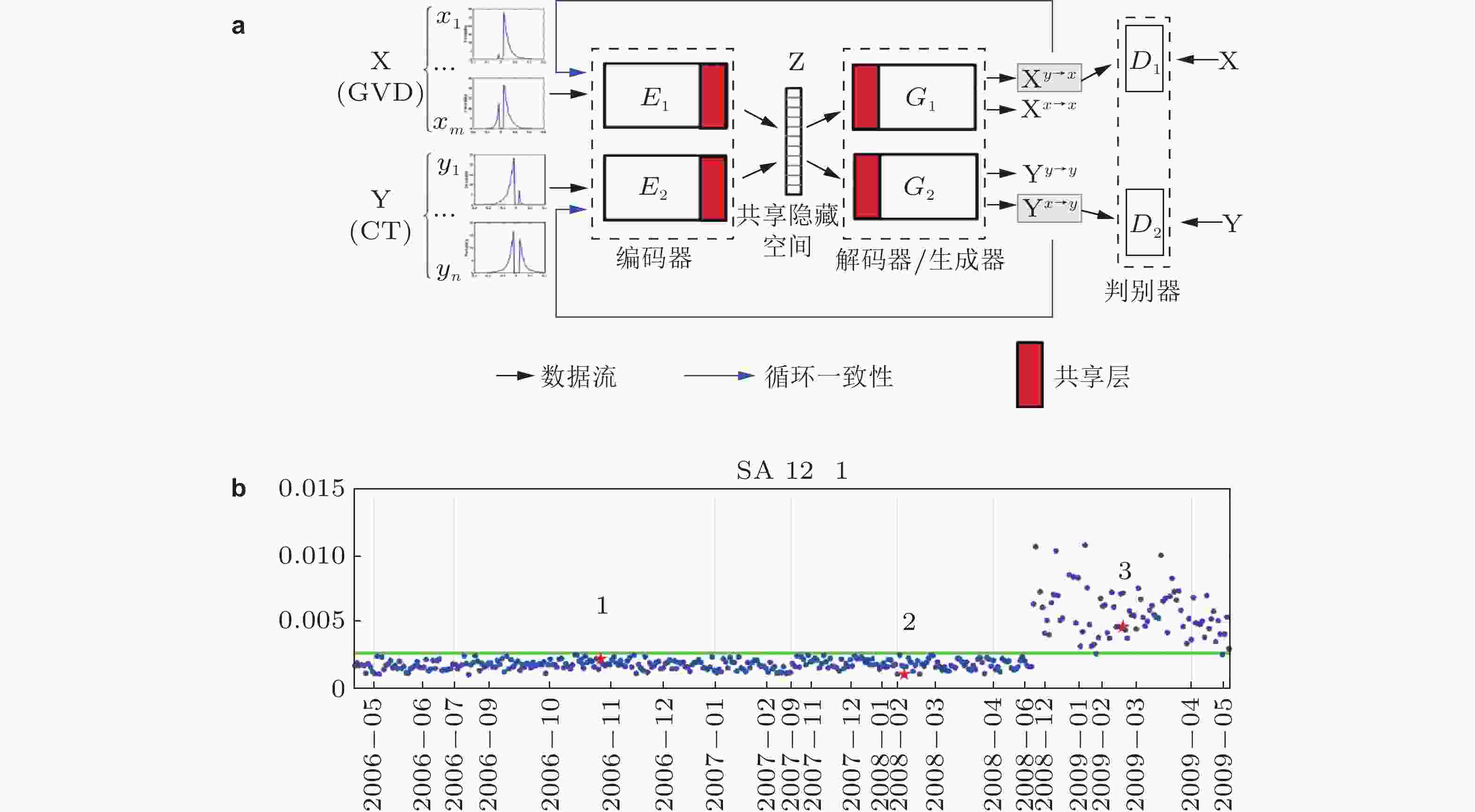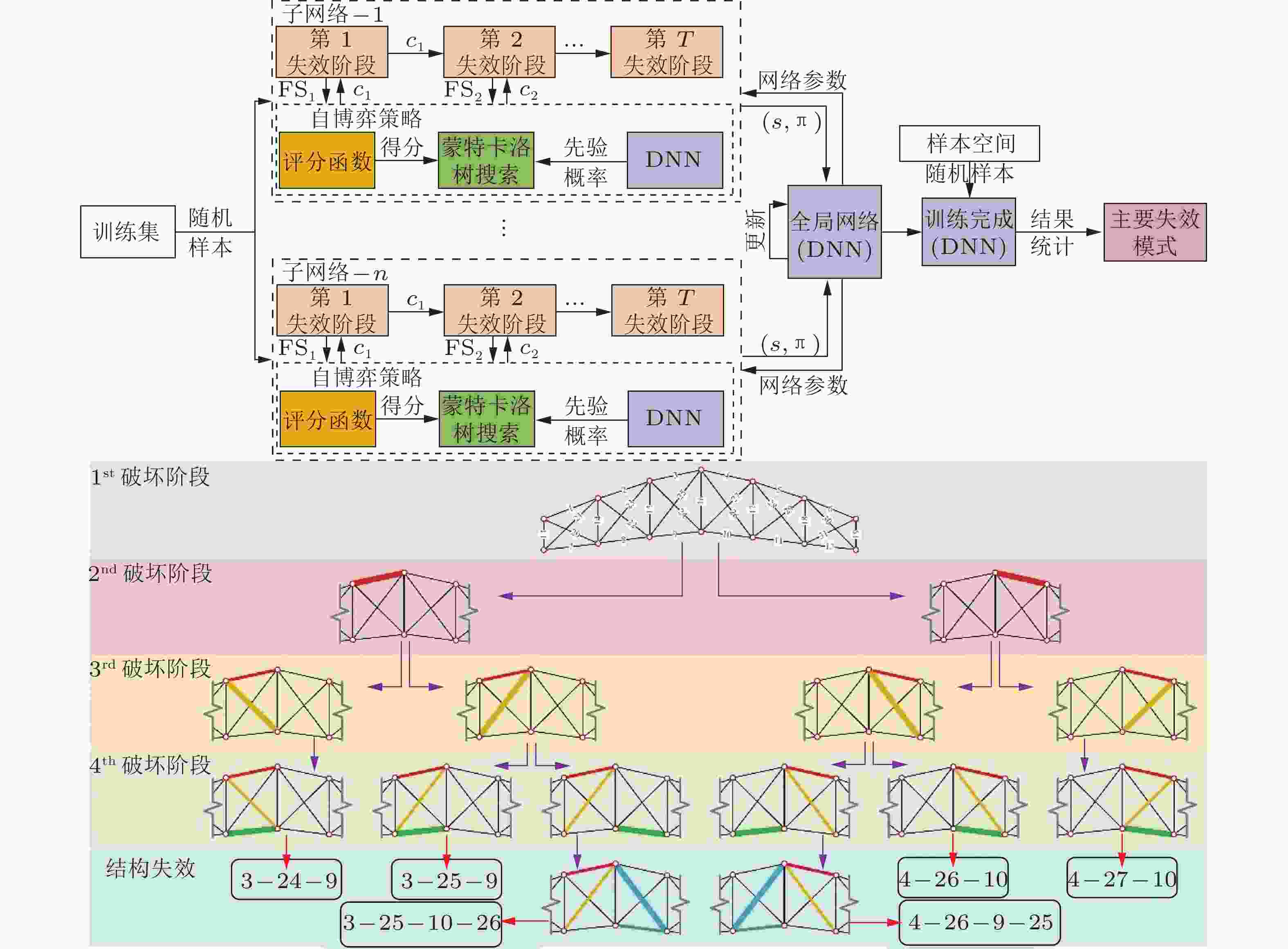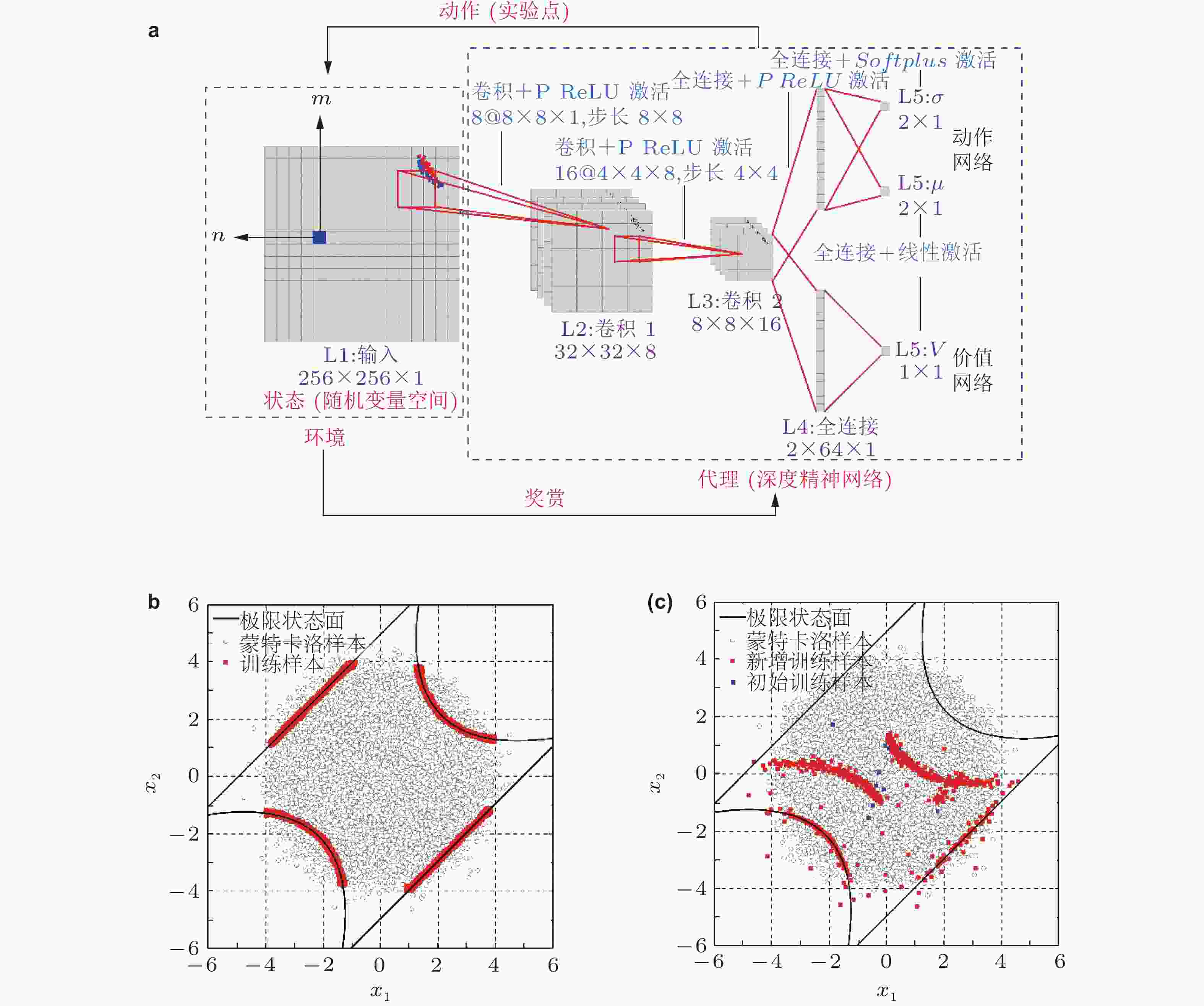Research advances in machine learning for structural state identification and condition assessment
-
摘要: 结构健康监测通过在大型工程结构上安装多类型传感器, 感知、采集、传输和处理多元数据, 已经成为保障重大工程结构安全的重要手段. 随着结构健康监测系统的广泛应用, 产生了海量的监测数据, 如何通过监测数据识别和评估结构状态与安全是核心科学问题之一. 由于土木工程结构的复杂性, 状态识别与评估的核心难点是高维问题优化与求解, 机器学习在高维问题求解方面具有很强的能力, 为该问题的解决提供了新的思路. 本文重点阐述机器学习在结构模态识别、损伤识别及可靠性评估等方面的研究进展, 并讨论未来在该研究方向的发展趋势.Abstract: Structural health monitoring (SHM) has become an important technique to ensure the safety of major engineering structures by sensing, collecting, transmitting and processing multivariate data, through the installation of multiple types of sensors on large engineering structures. With the wide application of SHM system, a huge amount of monitoring data is generated, and how to identify and evaluate the structural condition and safety through monitoring data is one of the core scientific problems. Due to the complexity of civil engineering structures, the core difficulty of state identification and assessment is the optimization and solution of high-dimensional problems. Machine learning has a strong capability in solving high-dimensional problems, providing new ideas for the solution of this problem. This paper focuses on the research progress of machine learning in structural modal identification, damage identification and reliability assessment, and discusses the future development trend in these research directions.
-
图 1 基于计算机视觉的结构模态参数识别方法 (Yang et al. 2017a)
图 2 基于模态独立性的结构模态参数机器学习求解方法 (Liu et al. 2021)
图 3 基于机器学习和随机子空间的结构模态参数识别方法 (Liu et al. 2023)
图 4 结构模态参数聚类结果 (Fan et al. 2019)
图 7 结构损伤识别稠密卷积网络 (Wang et al. 2021b)
图 8 结构损伤识别稠密卷积网络. (a) 主梁位移群和拉索索力群的时空概率分布相关深度学习模型, (b) 基于索力真实和预测分布Wasserstein距离的斜拉索损伤识别 (Xu et al. 2023)
图 10 基于可解释深度生成网络的结构可靠度重要抽样. (a)可解释深度生成网络重要抽样模型, (b)输出样本极限状态函数值, (c)输出样本概率分布 (Xiang et al. 2023)
图 11 基于深度强化学习的结构可靠度分析抽样. (a) 可解释深度生成网络重要抽样模型, (b) 强化学习选择的训练样本, (c) 对比方法选择的训练样本 (Xiang et al. 2020a)
-
[1] 鲍跃全, 李惠. 2019. 人工智能时代的土木工程. 土木工程学报, 52(5): 1-11 (Bao Y Q, Li H. 2019. Artificial intelligence for civil engineering. China Civil Engineering Journal, 52(5): 1-11). doi: 10.15951/j.tmgcxb.2019.05.001 Bao Y Q, Li H .2019 . Artificial intelligence for civil engineering. China Civil Engineering Journal,52 (5 ):1 -11 . doi: 10.15951/j.tmgcxb.2019.05.001[2] 李惠, 鲍跃全, 李顺龙, 张东昱. 2015. 结构健康监测数据科学与工程. 工程力学, 32(08): 1-7 (Li H, Bao Y Q, Li S L, Zhang D Y. 2015. Data science and engineering for structural health monitoring. Engineering Mechanics, 32(08): 1-7). doi: 10.6052/j.issn.1000-4750.2014.08.ST11 Li H, Bao Y Q, Li S L, Zhang D Y .2015 . Data science and engineering for structural health monitoring. Engineering Mechanics,32 (08 ):1 -7 . doi: 10.6052/j.issn.1000-4750.2014.08.ST11[3] 李雪松, 马宏伟, 林逸洲. 2019. 基于卷积神经网络的结构损伤识别. 振动与冲击, 38(1): 159-167 (Li X S, Ma H W, Lin Y Z. 2019. Structural damage identification based on convolution neural network. Journal of Vibration and Shock, 38(1): 159-167). doi: 10.13465/j.cnki.jvs.2019.01.023 Li X S, Ma H W, Lin Y Z .2019 . Structural damage identification based on convolution neural network. Journal of Vibration and Shock,38 (1 ):159 -167 . doi: 10.13465/j.cnki.jvs.2019.01.023[4] Abdeljaber O, Avci O, Kiranyaz S, Gabbouj M, Inman D J. 2017. Real-time vibration-based structural damage detection using one-dimensional convolutional neural networks. J. Sound Vibr., 388: 154-170. doi: 10.1016/j.jsv.2016.10.043 [5] Bao Y, Li H. 2021. Machine learning paradigm for structural health monitoring. Struct. Health Monit, 20(4): 1353-1372. [6] Bao Y, Chen Z, Wei S, Xu Y, Tang Z Y, Li H. 2019. The state of the art of data science and engineering in structural health monitoring. Engineering, 5(2): 234-242. doi: 10.1016/j.eng.2018.11.027 [7] Bao Y, Xiang Z, Li H. 2021. Adaptive subset searching-based deep neural network method for structural reliability analysis. Reliab. Eng. Syst. Saf., 213: 107778. doi: 10.1016/j.ress.2021.107778 [8] Beck, J. 2010. Bayesian system identification based on probability logic. Structural Control and Health Monitoring, 17(7): 825-847. [9] Cui F, Ghosn M. 2019. Implementation of machine learning techniques into the subset simulation method. Struct. Saf., 79: 12-25. doi: 10.1016/j.strusafe.2019.02.002 [10] Chen Z, Wang Y, Wu J, Deng C, Hu K. 2021. Sensor data-driven structural damage detection based on deep convolutional neural networks and continuous wavelet transform. Appl. Intell., 51: 5598-5609. doi: 10.1007/s10489-020-02092-6 [11] Demarie G V, Sabia D. 2019. A machine learning approach for the automatic long-term structural health monitoring. Struct. Health Monit., 18(3): 819-837. doi: 10.1177/1475921718779193 [12] Ding Z, Li J, Hao H. 2020. Structural damage identification by sparse deep belief network using uncertain and limited data. Struct. Control. Health Monit. , 27(5) : e2522. [13] Fan G, Li J, Hao H. 2019. Improved automated operational modal identification of structures based on clustering. Struct. Control. Health Monit., 26(12): e2450. [14] Facchini L, Betti M, Biagini P .2014 . Neural network based modal identification of structural systems through output-only measurement. Computers & Structures,138 :183 -194 Facchini L, Betti M, Biagini P. 2014. Neural network based modal identification of structural systems through output-only measurement. Computers & Structures, 138: 183-194[15] Feng C, Zhang H, Wang S, Li Y, Wang H, Yang F. 2019. Structural damage detection using deep convolutional neural network and transfer learning. KSCE J. Civ. Eng., 23: 4493-4502. doi: 10.1007/s12205-019-0437-z [16] Guan X, Sun H, Hou R, Xu Y, Bao Y, Li H. 2023. A deep reinforcement learning method for structural dominant failure modes searching based on self-play strategy. Reliab. Eng. Syst. Saf., 233: 109093. doi: 10.1016/j.ress.2023.109093 [17] Guan X, Xiang Z, Bao Y, Li H. 2022. Structural dominant failure modes searching method based on deep reinforcement learning. Reliab. Eng. Syst. Saf., 219: 108258. doi: 10.1016/j.ress.2021.108258 [18] He Y, Chen H, Liu D, Zhang L. 2021. A framework of structural damage detection for civil structures using fast fourier transform and deep convolutional neural networks. Appl. Sci., 11(19): 9345. doi: 10.3390/app11199345 [19] Hou R, Xia Y, Xia Q, Zhou X. 2019. Genetic algorithm based optimal sensor placement for L1‐regularized damage detection. Struct. Control. Health Monit., 26(1): e2274. doi: 10.1002/stc.2274 [20] Hou R, Wang X, Xia Q, Xia Y. 2020. Sparse Bayesian learning for structural damage detection under varying temperature conditions. Mech. Syst. Signal Proc., 145: 106965. doi: 10.1016/j.ymssp.2020.106965 [21] Huang H, Burton H V. 2019. Classification of in-plane failure modes for reinforced concrete frames with infills using machine learning. J. Build. Eng., 25: 100767. doi: 10.1016/j.jobe.2019.100767 [22] Huang Y, Beck J L. 2015. Hierarchical sparse bayesian learning for strucutral health monitoring with incomplete modal data. Int. J. Uncertain. Quantif., 5(2): 139-169. doi: 10.1615/Int.J.UncertaintyQuantification.2015011808 [23] Huang Y, Beck J L, Li H. 2017a. Hierarchical sparse Bayesian learning for structural damage detection: theory, computation and application. Struct. Saf., 64: 37-53. doi: 10.1016/j.strusafe.2016.09.001 [24] Huang Y, Beck J L, Li H. 2017b. Bayesian system identification based on hierarchical sparse Bayesian learning and Gibbs sampling with application to structural damage assessment. Comput. Meth. Appl. Mech. Eng., 318: 382-411. doi: 10.1016/j.cma.2017.01.030 [25] Huang Y, Yu J, Beck J L, Zhu H, Li H. 2020. Novel sparseness-inducing dual Kalman filter and its application to tracking time-varying spatially-sparse structural stiffness changes and inputs. Comput. Meth. Appl. Mech. Eng., 372: 113411. doi: 10.1016/j.cma.2020.113411 [26] Lei Y, Zhang Y, Mi J, Liu W, Liu L. 2021. Detecting structural damage under unknown seismic excitation by deep convolutional neural network with wavelet-based transmissibility data. Struct. Health Monit., 20(4): 1583-1596. doi: 10.1177/1475921720923081 [27] Li M, Wang Z. 2020. Deep learning for high-dimensional reliability analysis. Mech. Syst. Signal Proc., 139: 106399. doi: 10.1016/j.ymssp.2019.106399 [28] Lin Y Z, Nie Z H, Ma H W. 2017. Structural damage detection with automatic feature‐extraction through deep learning. Comput. -Aided Civil Infrastruct. Eng., 32(12): 1025-1046. doi: 10.1111/mice.12313 [29] Lieu Q, Nguyen K, Dang K, Lee S, Kang J, Lee J. 2022. An adaptive surrogate model to structural reliability analysis using deep neural network. Expert Syst. Appl, 189: 116104. doi: 10.1016/j.eswa.2021.116104 [30] Liu D, Bao Y, Li H. 2023. Machine learning-based stochastic subspace identification method for structural modal parameters. Eng. Struct., 274: 115178. doi: 10.1016/j.engstruct.2022.115178 [31] Liu D, Tang Z, Bao Y, Li H. 2021. Machine‐learning‐based methods for output‐only structural modal identification. Struct. Control. Health Monit., 28(12): e2843. [32] Lu Z, Lin G, Wang L. 2021. Output-only modal parameter identification of structures by vision modal analysis. J. Sound Vib., 497: 115949. doi: 10.1016/j.jsv.2021.115949 [33] Luo C, Keshtegar B, Zhu S, Taylan O, Niu X. 2022. Hybrid enhanced Monte Carlo simulation coupled with advanced machine learning approach for accurate and efficient structural reliability analysis. Comput. Meth. Appl. Mech. Eng., 388: 114218. doi: 10.1016/j.cma.2021.114218 [34] Mangalathu S, Jang H, Hwang S, Jeon J. 2020. Data-driven machine-learning-based seismic failure mode identification of reinforced concrete shear walls. Eng. Struct., 208: 110331. doi: 10.1016/j.engstruct.2020.110331 [35] Mao J X, Wang H, Fu Y G, Spencer B F. 2019. Automated modal identification using principal component and cluster analysis: Application to a long‐span cable‐stayed bridge. Struct. Control. Health Monit., 26(10): e2430. [36] Oh B K, Lee S H, Park H S. 2020. Damage localization method for building structures based on the interrelation of dynamic displacement measurements using convolutional neural network. Struct. Control. Health Monit., 27(8): e2578. [37] Ren C, Aoues Y, Lemosse D, De Cursi E S. 2022. Ensemble of surrogates combining Kriging and Artificial Neural Networks for reliability analysis with local goodness measurement. Struct. Saf., 96: 102186. doi: 10.1016/j.strusafe.2022.102186 [38] Sharma S, Sen S. 2020. One-dimensional convolutional neural network-based damage detection in structural joints. J. Civ. Struct. Health Monit., 10(5): 1057-1072. doi: 10.1007/s13349-020-00434-z [39] Sohn H, Farrar C R, Hemez F M, Shunk D D, Stinemates D W, Nadler B R, Czarnecki J J. 2003. A review of structural health monitoring literature: 1996–2001. Los Alamos National Laboratory, USA, 1, 16. [40] Su L, Huang X, Song M, Michael J. 2020. Automatic identification of modal parameters for structures based on an uncertainty diagram and a convolutional neural network. Struct., 28: 369-379. doi: 10.1016/j.istruc.2020.08.077 [41] Wang Q, Dai Y, Ma Z, Ni Y, Tang J, Xu X, Wu Z. 2022. Towards probabilistic data‐driven damage detection in SHM using sparse Bayesian learning scheme. Struct. Control. Health Monit., 29(11): e3070. [42] Wang J S, Li C F, Xu G J, Li Y L, Kareem A. 2021a. Efficient structural reliability analysis based on adaptive Bayesian support vector regression. Comput. Meth. Appl. Mech. Eng., 387: 114172. doi: 10.1016/j.cma.2021.114172 [43] Wang R, Li J, An S, Hao H, Liu W, Li L. 2021b. Densely connected convolutional networks for vibration based structural damage identification. Eng. Struct., 245: 112871. doi: 10.1016/j.engstruct.2021.112871 [44] Xiang Z, Bao Y, Tang Z, Li H. 2020a. Deep reinforcement learning-based sampling method for structural reliability assessment. Reliab. Eng. Syst. Saf., 199: 106901. doi: 10.1016/j.ress.2020.106901 [45] Xiang Z, Chen J, Bao Y, Li H. 2020b. An active learning method combining deep neural network and weighted sampling for structural reliability analysis. Mech. Syst. Signal Proc., 140: 106684. doi: 10.1016/j.ymssp.2020.106684 [46] Xiang Z, He X, Zou Y, Jing H. 2023. An importance sampling method for structural reliability analysis based on interpretable deep generative network. Eng. Comput., 1-14. [47] Xu Y, Tian Y, Li H. 2023. Unsupervised deep learning method for bridge condition assessment based on intra-and inter-class probabilistic correlations of quasi-static responses. Struct. Health Monit., 22(1): 600-620. doi: 10.1177/14759217221103016 [48] Xie D, Lu Z, Li G, Liu J, Wang L. 2023. Efficient Laplace prior-based sparse Bayesian learning for structural damage identification and uncertainty quantification. Mech. Syst. Signal Proc., 188: 110000. doi: 10.1016/j.ymssp.2022.110000 [49] Yang R Y, Singh S K, Tavakkoli M, Amiri N, Yang Y C, Karami M A, Rai R. 2020a. CNN-LSTM deep learning architecture for computer vision-based modal frequency detection. Mech. Syst. Signal Proc., 144: 106885. doi: 10.1016/j.ymssp.2020.106885 [50] Yang Y C, Dorn C, Mancini T, Talken Z, Kenyon G, Farrar C, Mascarenas D. 2017a. Blind identification of full-field vibration modes from video measurements with phase-based video motion magnification. Mech. Syst. Signal Proc., 85: 567-590. doi: 10.1016/j.ymssp.2016.08.041 [51] Yang Y C, Dorn C, Mancini T, Talken Z, Kenyon G, Farrar C, Mascarenas D. 2017b. Blind identification of high-resolution vibration modes of structures from video measurements only with phase based video motion magnification. Mech. Syst. Signal Proc., 85: LA-UR-15-28509. [52] Yang J, Zhang L, Chen C, Li Y, Li R, Wang G, Zeng Z. 2020b. A hierarchical deep convolutional neural network and gated recurrent unit framework for structural damage detection. Inf. Sci., 540: 117-130. doi: 10.1016/j.ins.2020.05.090 [53] Yin C, Kareem A. 2016. Computation of failure probability via hierarchical clustering. Struct. Saf., 61: 67-77. doi: 10.1016/j.strusafe.2015.09.005 [54] Yu Y, Wang C, Gu X, Li J. 2019. A novel deep learning-based method for damage identification of smart building structures. Struct. Health Monit., 18(1): 143-163. doi: 10.1177/1475921718804132 [55] Zhou T, Peng Y. 2022. Efficient reliability analysis based on deep learning-enhanced surrogate modelling and probability density evolution method. Mech. Syst. Signal Proc., 162: 108064. doi: 10.1016/j.ymssp.2021.108064 [56] Zhou Z, Shao S, Deng G, Gao Y, Wang S, Chu X. 2021. Vision-based modal parameter identification for bridges using a novel holographic visual sensor. Measurement, 179: 109551. doi: 10.1016/j.measurement.2021.109551 -




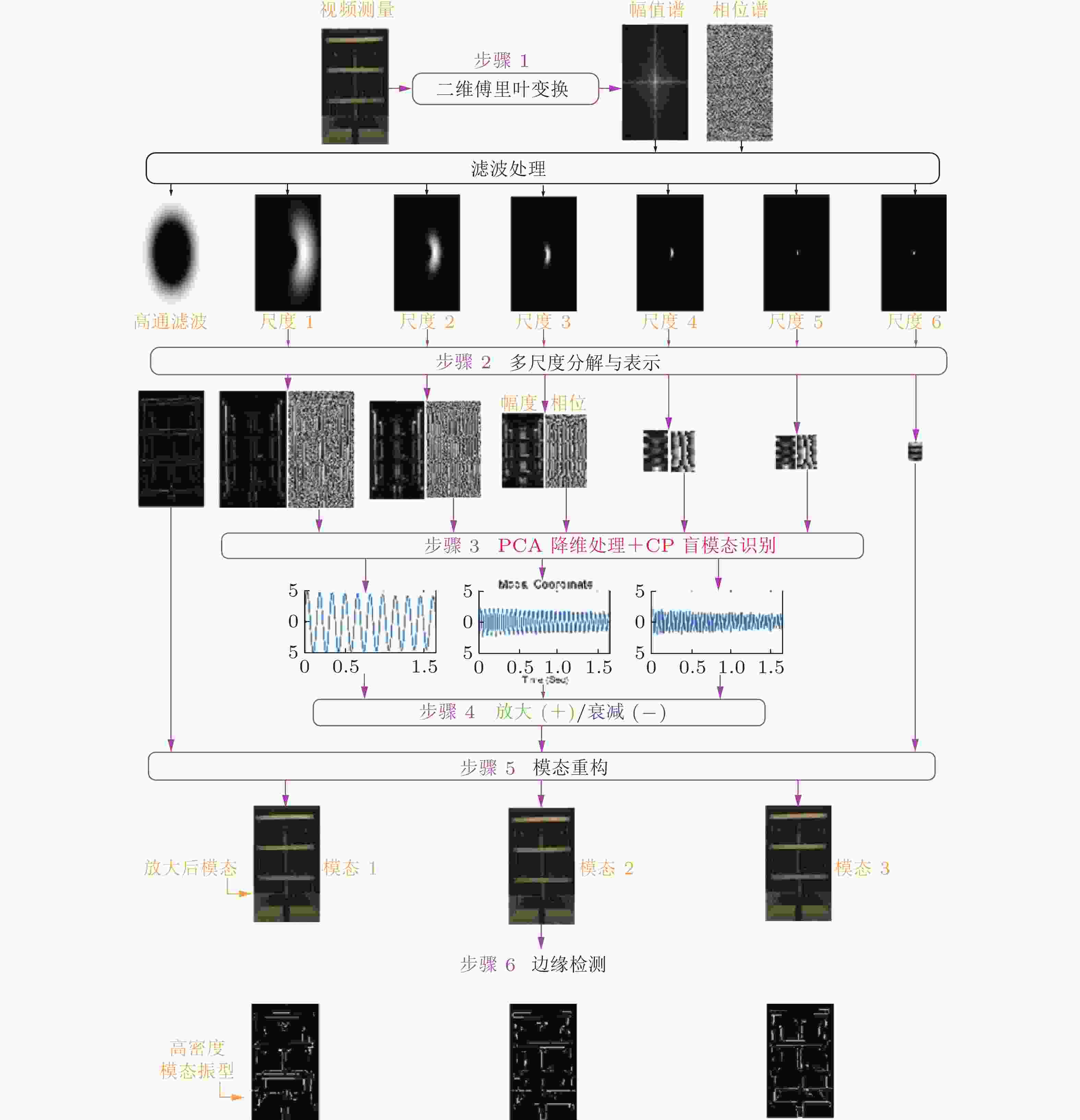
 下载:
下载:
